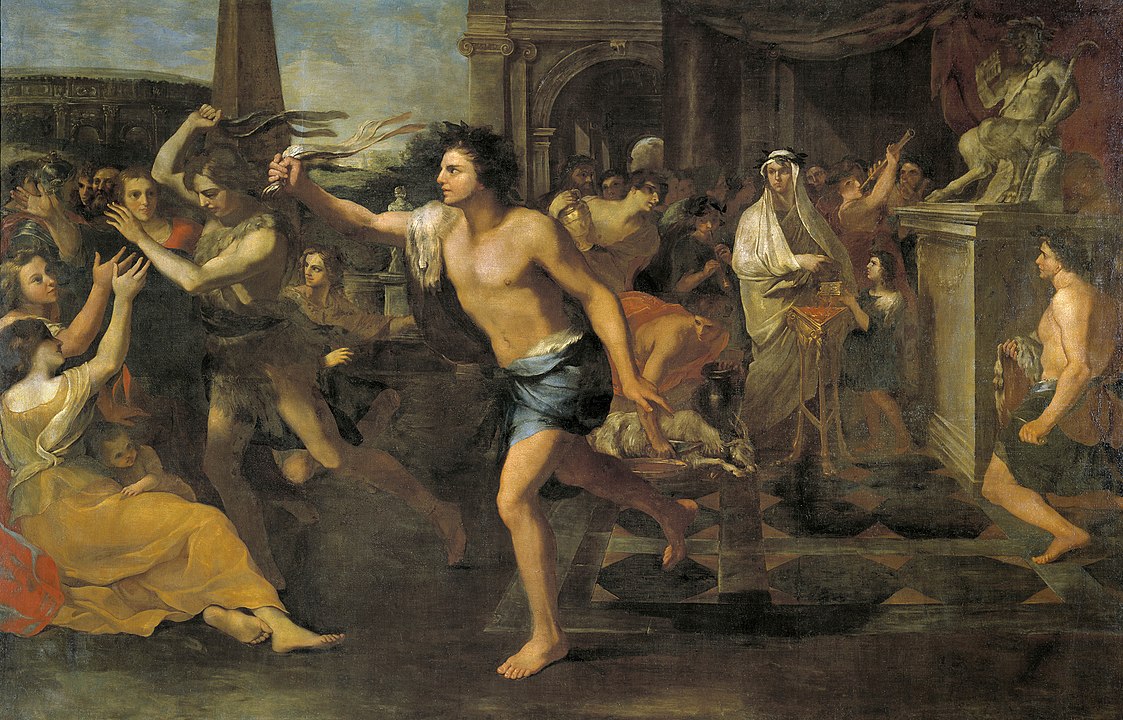Valentine's Day: Interesting facts about holiday and St. Valentine
 Illustrative photo (Freepik)
Illustrative photo (Freepik)
Almost all over the world, February 14 is celebrated as Valentine's Day. This holiday is now all about lovebirds exchanging cards, flowers, and gifts, but it was far from being about tender feelings in its early history.
RBC-Ukraine reveals who Saint Valentine really was, why sacrifices were made on this day in the past, and who came up with the popular romantic traditions nowadays.
Preparation involved references from The World History Encyclopedia, information from HISTORY portals, and Wikipedia.
"Dark" history of Valentine's Day
In Ancient Rome, February 14 was celebrated quite brutally - bloody sacrifices were made, women were whipped with leather lashes, and plenty of wine was consumed. Of course, this was not St. Valentine's Day but a pagan festival called Lupercalia, in honor of the Roman god of agriculture, Faunus, falling on February 13-15. It symbolized the arrival of spring, and its rituals were meant to promote fertility.
During the festival, a goat was sacrificed for fertility and a dog for purification. Then, the goat's skin was stripped off, cut into strips, and dipped in sacrificial blood.
People would go out on the streets, whipping women with these lashes made out of goat skin and striking the ground. It was believed that this would help a woman conceive faster and give birth easily, and the fields would be more fertile. Thus, the ritual had many adherents.

Photo: Lupercalia celebrations (wikimedia.org)
According to accounts, on the same day, all young women in the city would write their names on clay tablets and throw them into a large urn. Then, each unmarried man could draw a tablet with a name and unite with his chosen one for a year.
Who was Saint Valentine and why the holiday was named after him
With the spread of Christianity, the church sought to eradicate pagan traditions. This also happened with the Lupercalia festival. In the 5th century, it was replaced by a more acceptable holiday for the church - Catholics began to celebrate Saint Valentine's Day in mid-February.
To this day, it is not exactly known who this Valentine really was. Moreover, some historians believe that there were at least two saints with that name, both martyred on February 14, but in different years.
There are also several legends about the deeds of Valentine, which led to the association of the holiday with love.
According to one of them, the Roman Christian priest Valentine violated the decree of Emperor Claudius II, who prohibited his soldiers from marrying. But Valentine secretly married young couples, for which he was executed.
.jpg)
Photo: St. Valentine lived in the early years of Christianity (wikimedia.org)
Another legend tells that the priest was arrested during the persecution of Christians. When Valentine was brought before Emperor Claudius, he refused to renounce his faith and was placed under house arrest. The head of the house where Valentine was kept asked the priest to show the true power of God. Then he restored the sight to the blind daughter of the host, after which the whole family accepted Christianity. When news of the miracle and conversion reached the emperor, Valentine was executed.
Before his death, the man wrote a letter to the girl he healed, signing it "From your Valentine." This letter could have been the first "valentine's card."
Romantic holiday traditions
Love became part of Valentine's Day in Britain in the Middle Ages. English poet Geoffrey Chaucer first described Valentine's Day as a romantic day in his poem "Parliament of Fowls." The poem contained the lines: "It was on St. Valentine's Day, when every bird comes there to choose his mate." It was believed that the mating season of birds begins in mid-February.
William Shakespeare romanticized Valentine's Day in his works as well. Inspired by poetry, aristocrats began to write about tender feelings to their lovers in letters, now known as "valentines."
The oldest "valentine" is considered to be a poem by the Duke of Orleans, Charles, which he wrote to his wife in 1415 during his imprisonment in the Tower after his capture in the Battle of Agincourt. The Duke wrote about love and called the woman "my very gentle Valentine."
The tradition of writing love notes to lovers gained popularity over the years, and in 1797, a book titled "The Young Man’s Valentine Writer" was even published, featuring a collection of sentimental lines for young men to compose their own verses for their loved ones.

Photo: Valentine's Day was associated with love in the Middle Ages (freepik.com)
In the 19th century, postal services became available to most Englishmen, so "valentines" were sent across the country. Printed cards with verses and pictures also began to be mass-produced.
In 1847, "valentines" started to conquer the United States thanks to a woman named Esther Howland from Massachusetts. She made cards with real lace, ribbons, and colorful drawings. In 1913, the Hallmark Cards company in Kansas City launched mass production of "valentines," leading to an explosion of their popularity.
According to the Greeting Card Association of America, Americans send approximately 145 million cards every year on February 14. Moreover, 85% of the cards are purchased by women.

